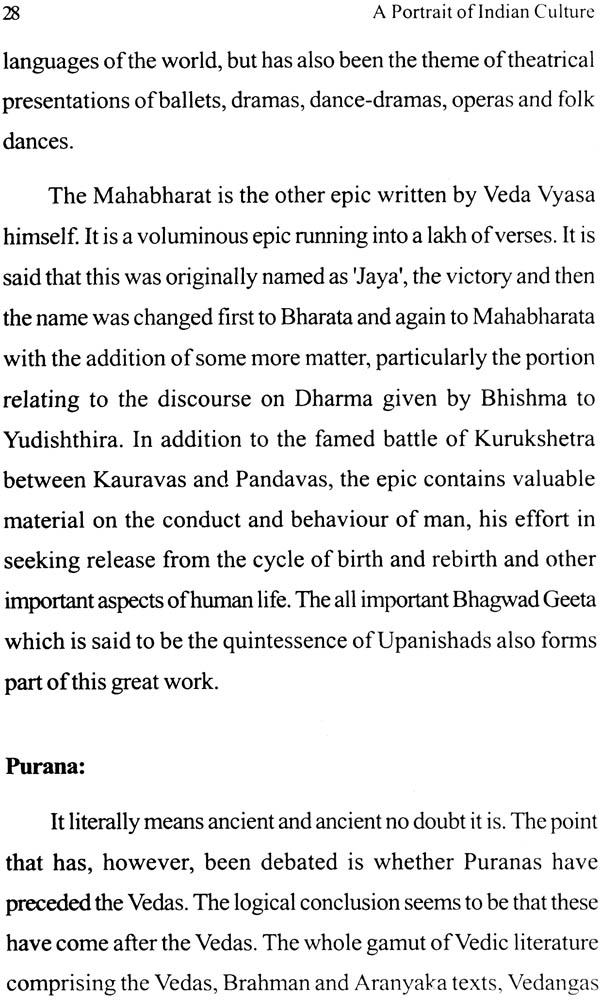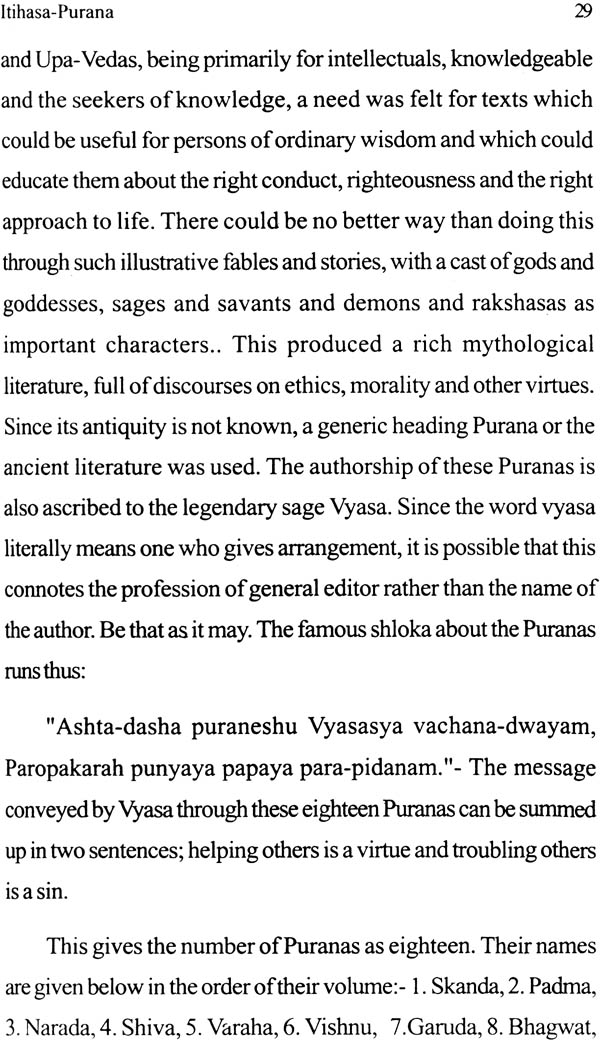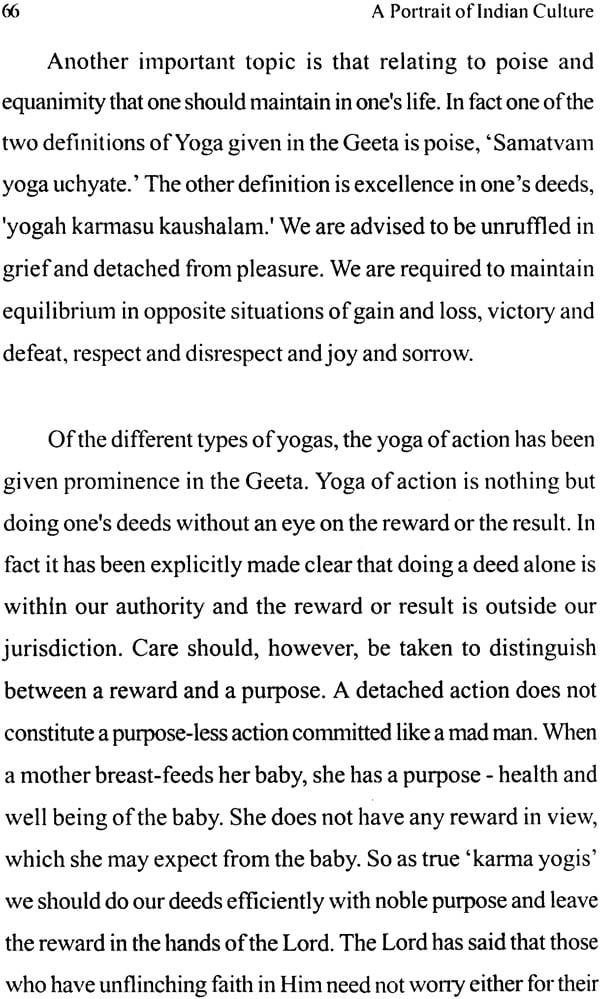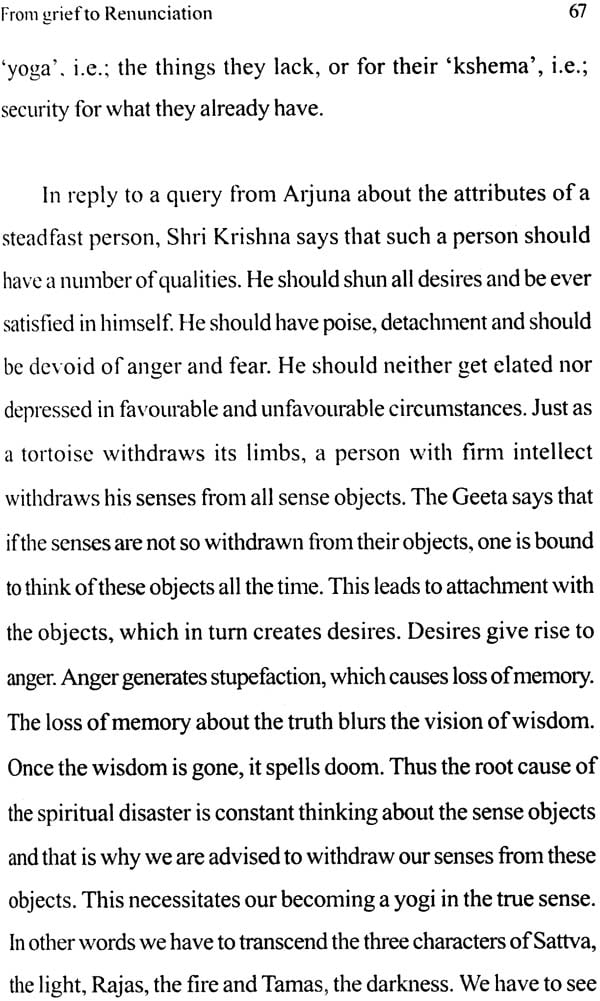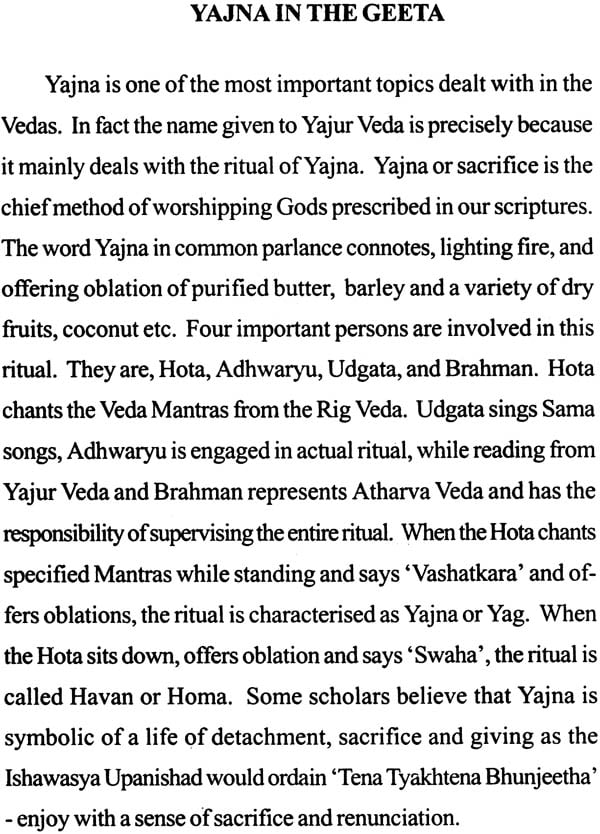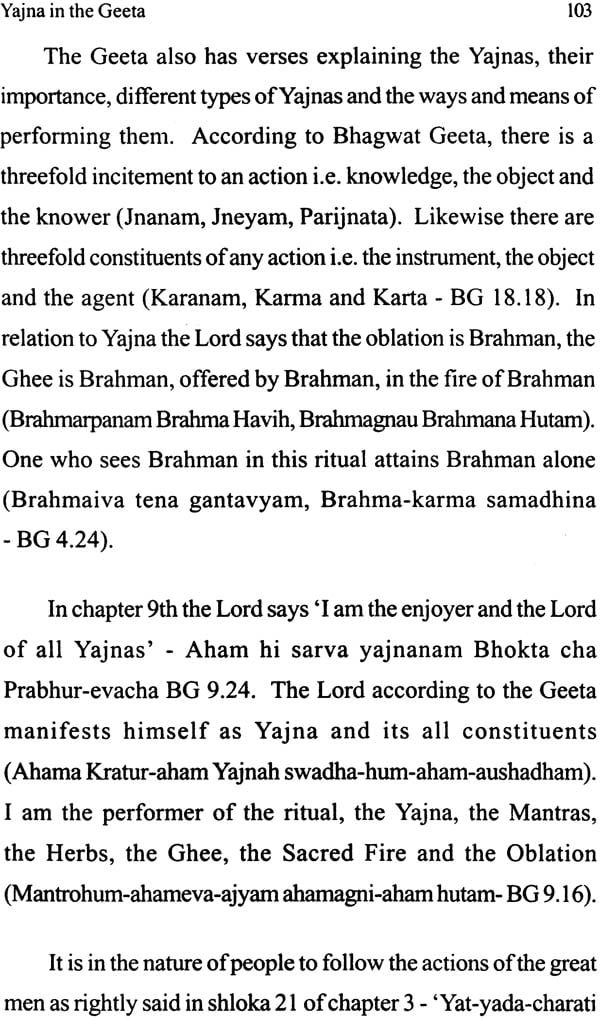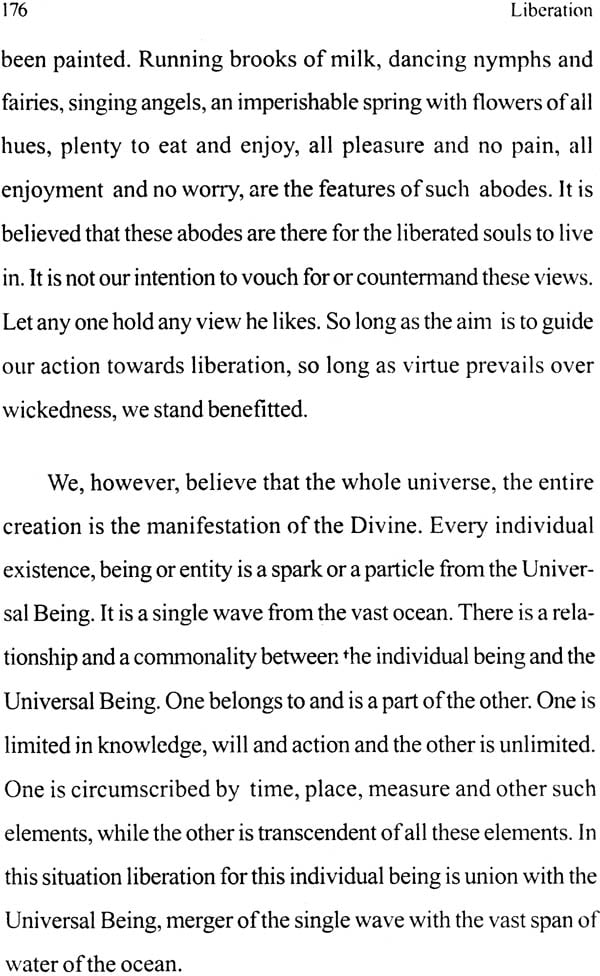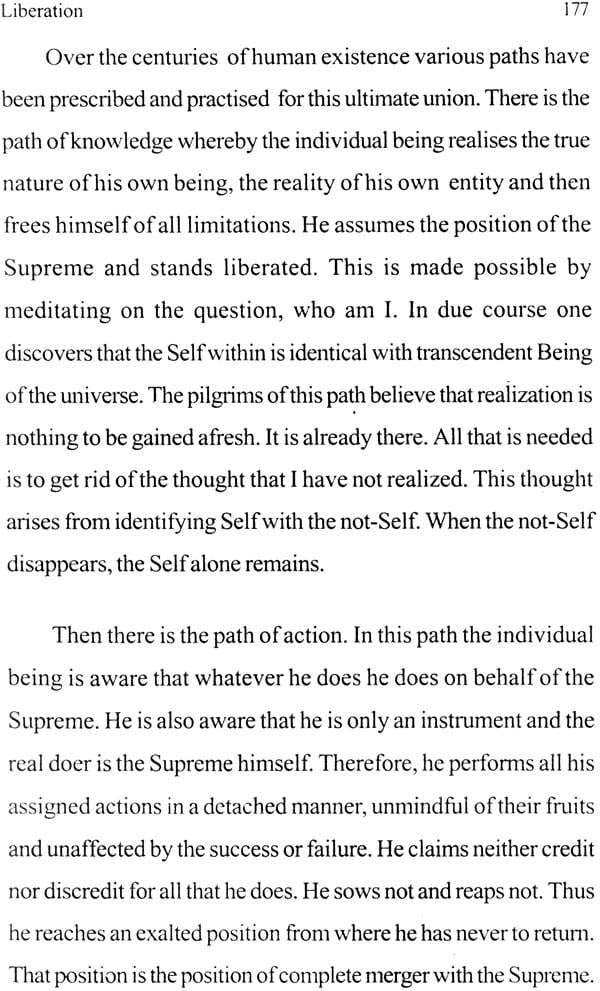
A Portrait of Indian Culture
Book Specification
| Item Code: | IDK234 |
| Author: | T.N. Dhar |
| Publisher: | Rashtriya Sanskrit Sansthan, Janakpuri |
| Edition: | 2003 |
| Pages: | 236 |
| Cover: | Hardcover |
| Other Details | 8.8" X 5.7" |
Book Description
From the Jacket
"A Portrait of Indian Culture" is a multi dimentional short volume primarily meant for the youth. It gives an account of the entire gamut of the ancient Indian literature, as also the different schools of Indian philosophy. It includes a set of analytical articles on the Gita, as also stories from the Upanishads with fruitful morals. There are some chapters which deal with contemporary problems and their solution from our rich cultural heritage, in order to establish the relevance of the ancient knowledge to the present day needs. The book ventures to suggest some new angles of approaching and studying the treasurehouse of knowledge inherited by us. Above all it has a message that we should strive to raise man from animality to divinity for the goof of the mankind.
Shri T.N. Dhar was born and brought up in Kashmir. He is an Hons. Graduate in Sanskrit and a qualified I.C.W.A. from London. He worked in Indian Audit Department and later in the Rashtriya Sanskrit Sansthan, Shri Lal Bahadur Sahstri Rashtriya Sanskrit Vidyapeetha and Rashtriya Veda Vidya Pratishthan. A widely traveled and widely read person, Shri Dhar writes in many languages. He is the author of the two volumes of Hindi poems and some more books authored by him and written in English, Urdu and Kashmiri are ready for publication. His articles have appeared in some reputed journals. His main interest is Indian Philosophy, Culture and comparative study of Religions.
Preface
An important question that faces us today is how the future civilization of the world should be designed. For we are today in the grip of an unprecedented crisis; the dilemmas that confront us take us back to the fundamentals of human nature where the forces of the Reason and Unreason are battling today against each other for their triumph; the danger of human race lapsing into he devouring gravitational pulls of impulsive life are so enormous that unless we can knock the doors of the supra-rational, we cannot hope to successfully cross the barriers, which block our further progress. It is in this context that the study of culture in general and of Indian culture in particular assumes great importance.
The western civilization has largely been guided by the vital and pragmatic drives controlled by the human reason on the assumption that the human reason is the highest available faculty. This civilization has resulted in the extraordinary development of intellectual life, both philosophical and scientific, but has also rendered the society into a field of irrational pursuit of impulses, on the one hand, and of mechanization, standardization and dehumanization, on the other, In contrast to the Western civilization, Indian culture has followed the path of the control of the physical and the vital not only but the powers of the mind but also by the powers of supra-rational faculties, exploration into which are found to have been recorded in the ancient works like the Veda, Upanishads, Bhagavadgita and others. The path of Indian culture has rendered Indian history into a long and unbroken thread of continuity. It is true that at a certain stage of the development of this culture, certain confusions and exaggerations arose, which led to the neglect of the development of material life. And, as a result, although India could develop great treasures of spiritual knowledge, it fell into external religionism and loss of intellectual and vital vigour. Fortunately, the burning light of spirituality continued as a saving light even in the period of decline, and the renascent India holds out a promise of rebuilding Indian life on surer and greater foundation of spirituality. It is in this context that not only India but also the West may find the possibility of solutions of the problems of the contemporary crisis.
This makes study of Indian culture a matter of direct relevance, and I find that Dr. Dhar has done well to focus on three important aims. In the first place, he has attempted to give a brief account of various aspects of ancient Indian literature. Secondly, he has endeavoured to highlight the important facets of the rich heritage of Indian culture. And, thirdly, he has underlined the spiritual theme and its relevance to our own times.
Swami Vivekananda had declared that his mission was to raise man from animality to divinity, and Dr. Dhar has suggested that it was not a personal mission of Swami Vivekananda but also the mission that the whole of India needs to undertake to fulfil.
Dr. Dhar has drawn in this book a portrait of Indian culture, and it reflects not only his wide scholarship but also an earnest aspiration to share the results of his research in various aspects of Indian culture with the youth of today. I am sure that this book will be found useful to the young people, but I also feel that there is a good deal of material in this book, which should be useful for every type of readership.
I congratulate Dr. Dhar for having written this book, which I have no doubt, will prove to be a significant contribution to the recent studies in Indian culture.
Foreword
I have a great pleasure in presenting this volume of Golden Jubilee of India's Independence Series of Rashtriya Sanskrit Sansthan to our esteemed readers. The volume represents the goodwill and cooperation the Sansthan has been receiving from the distinguished scholars all over the country, right from its inception.
The Sansthan ws established in October, 1970 as an autonomous apex body under the Ministry of Human Resource Development, Government of India, with a view to promoting, preserving and propagating Sanskrit learning in all its aspects, of course with special reference to the indepth Shastraic learning. Apart from conducting the regular courses of studies at the various constituent Vidyapeethas, it has been bringing out invaluable publications representing dissemination of knowledge contained in the Shastras.
Thanks to the continued help, encouragement and support from the Ministry of Human Resource Development, Department of Education, Government of India, the Sansthan has grown by leaps and bounds and has been able to render its services to promotion of Sanskrit learning at national and international levels In recognition of its importance and eminence in the field of traditional Sanskrit learning and teaching, the Sansthan has since been given the 'Deemed to be University' status in the year 2002. The Sansthan had decided to bring out 50 scholarly monographs written by eminent Sanskrit Scholars of different fields and disciplines as part of the academic programmes organized by the Sansthan to celebrate the Golden Jubilee of India's Independence.
The present book 'A Portrait of Indian Culture' is an attempt to provide to the youth of the country an insight into the whole gamut of the rich and varied corpus of the sacred literature so that they genuinely feel proud to be the inheritors of this world acclaimed fund of knowledge. It will simultaneously provide them the necessary inspiration to go for an indepth study of the area of their individual interest.
We are highly thankful to Shri Triloki Nath Dhar, who incidentally has rendered valuable service to the growth of the Sansthan for more than a decade, for contributing this informative volume for the Golden Jubilee Series of the Sansthan. Thanks are also due to Prof. Kireet Joshi, the well-known Philosopher, Educationist and Thinker for writing a preface to his book.
I record my appreciation for the officers and staff of the Sansthan associated with planning and bringing out this series. Thanks are also due to M/S New Tech Graphic Home for printing this book.
| Foreword | iii | |
| Preface | v | |
| Introduction | x | |
| 1 | Roots, Firm and Deep | 1-7 |
| -The Vedic literature | ||
| 2 | Branches, Varied and Strong, -Upa-Vedas and Vedangas | 8-15 |
| 3 | Flowers, Fragrant and Beautiful, -the Upanishads | 16-25 |
| 4 | Leaves, evergreen and ever fresh, -Itihasa-Purana | 26-36 |
| 5 | The systems of Indian Philosophy | 37-48 |
| 6 | The Kashmir Shaiva Philosophy | 49-54 |
| 7 | Shiva, the Multi-faceted Lord | 55-61 |
| 8 | From Grief to Renunciation | 62-70 |
| 9 | Transformation of Arjuna | 71-84 |
| 10 | The Steadfast and the Loved one | 85-89 |
| 11 | Yoga in the Bhagawad Gita | 90-101 |
| 12 | Yajna in the Geeta | 102-108 |
| 13 | The concept of Punar-Janma in the Geeta | 109-116 |
| 14 | Divinity, the Geeta way | 117-132 |
| 15 | Ahankara, the Notion of Ego | 133-141 |
| 16 | Use of Similes in the Geeta | 142-149 |
| 17 | Divinity that makes Godman of a man | 150--155 |
| 18 | Values, Views and Virtues | 156-165 |
| 19 | Divine Majesty and Splendour | 166-174 |
| 20 | Liberation | 175-181 |
| 21 | The Om | 182-189 |
| 22 | Pledges and promises | 190-200 |
| 23 | Chains, Sets and Series | 201-208 |
| 24 | When the gods faltered | 209-213 |
| 25 | Fruits of Fearlessness | 214-218 |
| 26 | Curiosity of Sages | 219-223 |
| 27 | Light is Light, after all | 224-228 |
| 28 | Bibliography | 229-232 |
| 29 | Glossary of Sanskrit words | 233-236 |
